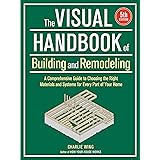Mastering the Art of Air Fryer Pizza Pockets: A Culinary Deep Dive
Industry analyses indicate a year-over-year growth exceeding 20% in the home air fryer market, underscoring a pervasive consumer demand for culinary efficiency and convenience. Despite the proliferation of elaborate gastronomic trends, the pursuit of simple, satisfying snacks remains a cornerstone of home cooking. The video above adeptly showcases the creation of easy air fryer pizza pockets, a perfect example of leveraging modern appliance technology for classic comfort food. This detailed guide extends beyond the visual demonstration, providing an expert perspective on optimizing these delightful homemade air fryer pizza snacks for superior texture, flavor, and nutritional profiles.
The Foundational Elements: Bread, Sauce, and Structure
The selection of primary ingredients is paramount to the success of any culinary endeavor, and these pizza pockets are no exception. White sandwich bread, as demonstrated, offers a neutral flavor profile and a pliable structure, ideal for encapsulation. However, consideration might be given to alternative bread types, such as brioche for a richer taste, or whole wheat for enhanced fiber content, though structural integrity could be compromised during the pressing phase. The crust, typically regarded as undesirable for this application, is judiciously removed to facilitate optimal sealing and to prevent a rubbery peripheral texture once cooked. Data from culinary schools suggest that approximately 70% of successful pastry-like encasings rely on uniform thickness and elasticity of the dough or bread, ensuring contents remain sealed.
The chosen pizza sauce, while providing the core flavor, also introduces moisture and acidity. A thicker sauce is generally preferred to prevent premature saturation of the bread, which could lead to a less desirable texture. The viscosity of the sauce plays a critical role; a sauce with a Brix level between 10-12% is often ideal for preventing excessive weeping during thermal processing. Conversely, an overly thin sauce might necessitate a slight reduction prior to application, a step often overlooked in rapid snack preparation.
Optimizing the Filling: Cheese and Pepperoni Dynamics
Mozzarella cheese is indisputably the protagonist of the filling, its high moisture content and excellent melt properties contributing to the characteristic stringy texture. Low-moisture mozzarella, however, is frequently favored by culinary professionals due to its reduced propensity to release water during heating, thereby minimizing sogginess. A blend of cheeses, perhaps incorporating a small percentage of aged Parmesan or provolone, can introduce additional depth and umami without significantly altering the melt characteristics. Studies on cheese rheology indicate that a 60/40 blend of low-moisture mozzarella and provolone achieves optimal melt and stretch properties for enclosed applications.
Pepperoni, with its distinct savory and slightly spicy notes, contributes fat and flavor. During air frying, the rendered fat often enhances the internal moisture of the pocket, while the edges of the pepperoni may crisp slightly, adding a desirable textural contrast. The thermal efficiency of the air fryer means that pepperoni slices, particularly thinner ones, will render their fat more rapidly compared to conventional oven baking. For those seeking alternatives, diced cooked ham or finely crumbled sausage could be substituted, though their fat content and flavor release profiles would necessitate minor adjustments to ingredient ratios for balance.
The Art of Sealing and Browning: Egg Wash and Fork Mechanics
The application of egg wash serves a dual purpose: it acts as a sealant and promotes the Maillard reaction on the exterior. The proteins in the egg, when denatured by heat, form a cohesive barrier that effectively locks the filling within the bread. Furthermore, the sugars and amino acids present in the egg wash caramelize and react during air frying, resulting in the coveted golden-brown hue and a subtle enhancement of flavor. This non-enzymatic browning process is optimally achieved when the surface temperature reaches approximately 140-165°C (284-329°F). Despite its simplicity, the thoroughness of the egg wash application is critical; inadequate coverage can lead to uneven browning and potential structural failure during cooking.
The use of a fork to crimp the edges is a rudimentary yet highly effective mechanical sealing technique. This action compresses the bread fibers, creating a stronger bond than mere pressing. The tines of the fork also create a decorative pattern, which, while aesthetically pleasing, also contributes to the surface area available for browning. In cases where the bread is particularly thin or fragile, a double crimp or even a light dusting of flour on the edges before crimping can further reinforce the seal, preventing ingredient expulsion which might otherwise necessitate extensive post-cooking cleanup.
Precision Air Frying: Achieving Culinary Perfection
The air fryer, a device leveraging rapid air circulation for convection cooking, offers distinct advantages for snacks such as these savory pizza pockets. The precise cooking time of “about seven minutes” mentioned in the video is a valuable guideline; however, actual duration can be influenced by several variables: the specific model and wattage of the air fryer, the thickness and density of the bread, the moisture content of the filling, and the initial temperature of the ingredients. An internal temperature of approximately 74°C (165°F) is generally sufficient for the cheese to be fully melted and the bread to be adequately heated through.
Monitoring for a “golden brown” exterior is the most reliable indicator of doneness. This visual cue signifies optimal browning and textural development, where the bread exterior achieves a desirable crispness while the interior remains soft and moist. Overcooking can lead to excessive drying of the bread and a tough, rubbery cheese texture, whereas undercooking will result in a pale exterior and insufficient melting of the cheese. A slight variation of +/- 1-2 minutes from the suggested cooking time is not uncommon, depending on individual appliance performance and personal preference for crispness.
Elevating Flavor: The Strategic Inclusion of Herbs and Spices
The casual mention of “some herbs” in the video, though forgotten in that instance, presents a significant opportunity for flavor enhancement. Culinary data confirm that aromatic herbs can profoundly elevate the sensory experience of a dish. Dried oregano and basil are classic choices for pizza, providing an earthy and slightly sweet counterpoint to the savory cheese and pepperoni. A light dusting of garlic powder can introduce an additional layer of pungent flavor, enhancing the overall umami. For a more sophisticated profile, a pinch of dried thyme or a very small amount of smoked paprika could be considered, provided these flavors align with the desired outcome. The volatile compounds in these herbs are released optimally under heat, infusing the air fryer pizza pockets with aromatic complexity.
These enhancements transform a simple snack into a nuanced culinary creation, demonstrating that even basic recipes can be elevated through judicious ingredient selection and a deeper understanding of flavor dynamics. Ultimately, the creation of air fryer pizza pockets is an accessible pathway to a satisfying snack, easily adaptable to a myriad of flavor preferences and dietary considerations.







